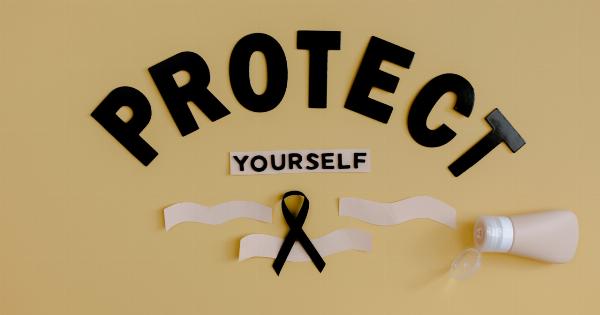When it comes to injuries, two common terms that often get mixed up are semantic and sprain. Both conditions can cause discomfort and affect a person’s ability to perform daily activities.
However, it is crucial to understand the differences between these two conditions in order to provide the appropriate treatment and care. In this article, we will delve into the symptoms and causes of semantic and sprain injuries, helping you differentiate between the two.
Semantic Injury
A semantic injury refers to damage or impairment to a person’s ability to understand, process, or produce language. It is typically caused by a neurological condition or trauma to the brain, such as a stroke, brain injury, or degenerative disease.
Semantic injuries can significantly impact a person’s communication skills, making it challenging for them to express themselves or comprehend language.
Some common symptoms of a semantic injury include:.
1. Difficulty finding the right words
A person with a semantic injury may struggle to find the appropriate words to express their thoughts or ideas. They may experience frequent word-finding difficulties and may rely on general terms or gestures to communicate.
2. Vocabulary problems
Individuals with semantic injuries may exhibit difficulty remembering or recognizing words and their meanings. They might have trouble understanding abstract words or concepts, leading to challenges in comprehending complex texts or conversations.
3. Deficits in word association
A semantic injury can affect a person’s ability to link related words or concepts. They may struggle with word associations and find it difficult to make connections between words or understand the context of a conversation.
4. Difficulty understanding or using figurative language
People with semantic injuries may struggle with idiomatic expressions, idioms, metaphors, or other forms of figurative language. They might take expressions literally and have difficulty grasping the intended meaning behind them.
5. Impaired comprehension
An individual with a semantic injury may have trouble understanding spoken or written language. They may find it challenging to follow instructions, comprehend complex sentences, or engage in meaningful conversations.
Causes of Semantic Injury
Several factors can lead to semantic injuries, including:.
1. Neurological conditions
Conditions like stroke, traumatic brain injury, dementia, or conditions affecting the temporal or frontal lobes of the brain can cause semantic injuries.
2. Brain tumors
Tumors in certain areas of the brain can result in semantic impairments due to the pressure they exert on brain structures responsible for language processing.
3. Neurodegenerative diseases
Diseases such as Alzheimer’s disease and semantic dementia can progressively impair a person’s language abilities, leading to semantic injuries.
4. Brain infections
Infections like encephalitis or meningitis can damage brain tissue and affect language processing, potentially resulting in semantic injuries.
5. Traumatic brain injury
A severe blow to the head or a jolt can cause damage to the brain, leading to semantic injuries.
Sprain Injury
Unlike semantic injuries that affect language processing, a sprain injury refers to damage to the ligaments, which are the tough bands of tissue connecting bones to each other at a joint.
Sprains are commonly associated with joint injuries, particularly in the ankle, wrist, or knee. They are usually caused by a sudden twisting or stretching motion that exceeds the ligaments’ normal range of motion.
Common symptoms of a sprain injury include:.
1. Pain, swelling, and tenderness
A sprain injury often causes immediate and intense pain at the affected joint. Swelling and tenderness around the injured area are also common.
2. Limited range of motion
A person with a sprain injury may experience difficulty moving the joint due to pain and swelling. The range of motion may be significantly restricted compared to the uninjured joint.
3. Bruising or discoloration
Bruises or areas of discoloration may develop around the sprained joint. This discoloration is known as ecchymosis and occurs due to the leakage of blood vessels following the injury.
4. Instability
A sprain can cause a feeling of instability or weakness in the affected joint. The injured area may give way or feel like it might collapse, making it challenging to bear weight or perform physical activities.
5. Popping sound or sensation
Some individuals may hear a popping sound or feel a popping sensation at the time of injury, indicating a sprain.
Causes of Sprain Injury
Sprain injuries can occur due to various factors, including:.
1. Sports or physical activities
Athletes or individuals involved in activities with sudden changes in direction or high impact, such as basketball or skiing, have an increased risk of sprain injuries.
2. Falls
Tripping, slipping, or falling can cause the ligaments to stretch or tear, resulting in a sprain injury.
3. Improper footwear
Wearing shoes that do not provide proper support or traction can contribute to an increased risk of sprains, particularly in the ankle.
4. Overuse or repetitive stress
Engaging in activities that place excessive stress on a particular joint over time can lead to ligament damage and result in a sprain injury.
5. Accidents or trauma
Forceful impacts during car accidents or other traumatic incidents can cause sprains in multiple joints.
Treatment and Management
As semantic and sprain injuries differ significantly in their nature and underlying causes, the treatment and management approaches for each condition also vary:.
Treating Semantic Injury
When treating semantic injuries, the focus is on rehabilitation and maximizing communication abilities. Speech therapy plays a crucial role and may include:.
1. Language therapy
Language therapy aims to improve word retrieval, word associations, and overall language comprehension.
2. Cognitive therapy
Cognitive therapy focuses on enhancing attention, memory, problem-solving, and other cognitive skills that support language processing.
3. Alternative communication methods
If traditional spoken language becomes too challenging, speech therapists may explore alternative and augmentative communication methods, such as using gestures, pictures, or assistive devices.
Managing Sprain Injury
The treatment for a sprain injury typically includes the following steps:.
1. RICE method
RICE stands for Rest, Ice, Compression, and Elevation. This method helps reduce pain and swelling. Rest the injured joint, apply ice packs, use compression bandages, and elevate the affected area to minimize swelling.
2. Pain management
Over-the-counter pain relievers such as acetaminophen or nonsteroidal anti-inflammatory drugs (NSAIDs) can help manage pain and reduce inflammation, but consult a healthcare professional before taking any medication.
3. Physical therapy
Physical therapy plays a vital role in the rehabilitation of sprain injuries. Therapists will guide patients through exercises to restore strength, flexibility, and range of motion in the affected joint.
4. Bracing or splinting
In some cases, wearing a brace or splint can provide support and stability to the injured joint during the healing process.
5. Surgery (in severe cases)
Although surgery is rare for most sprains, severe cases may require it to repair torn ligaments or address complications.
Conclusion
In summary, semantic and sprain injuries are distinct in nature, symptoms, and causes. Understanding the differences between these two conditions is crucial for accurate diagnosis and appropriate treatment.
While semantic injuries affect language processing and can be caused by neurological conditions or brain trauma, sprain injuries result from ligament damage due to abrupt joint movements or trauma. Proper treatment, whether it be speech therapy for semantic injuries or the RICE method and physical therapy for sprain injuries, can facilitate recovery and improve overall well-being.































